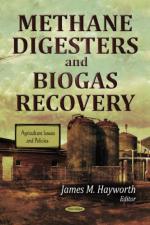|
This section contains 542 words (approx. 2 pages at 300 words per page) |

|
Refers to the biological degradation of either sludges or solid waste under anaerobic conditions, meaning that no oxygen is present. In the digestive process, solids are converted to noncellular end products.
In the anaerobic digestion of sludges, the goals are to reduce sludge volume, insure the remaining solids are chemically stable, reduce disease-causing pathogens, and enhance the effectiveness of subsequent dewatering methods, sometimes recovering methane as a source of energy. Anaerobic digestion is commonly used to treat sludges that contain primary sludges, such as that from the first settling basins in a wastewater treatment plant, because the process is capable of stabilizing the sludge with little biomass production, a significant benefit over aerobic sludge digestion, which would yield more biomass in digesting the relatively large amount of biodegradable matter in primary sludge.
The microorganisms responsible for digesting the sludges anaerobically are often classified in two groups...
|
This section contains 542 words (approx. 2 pages at 300 words per page) |

|


